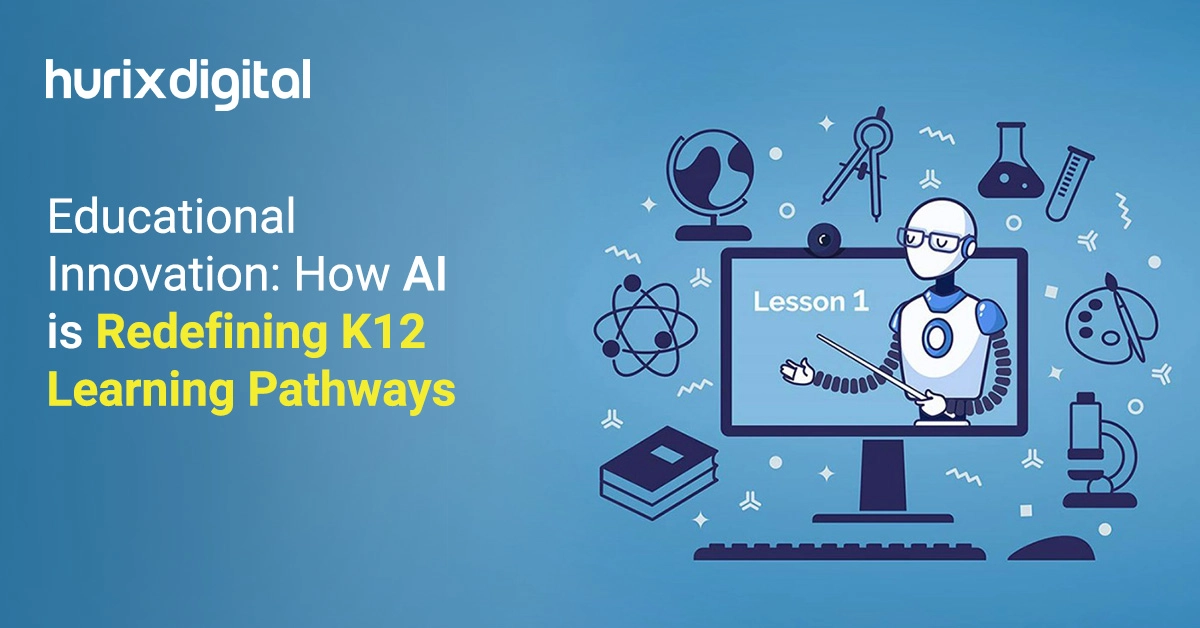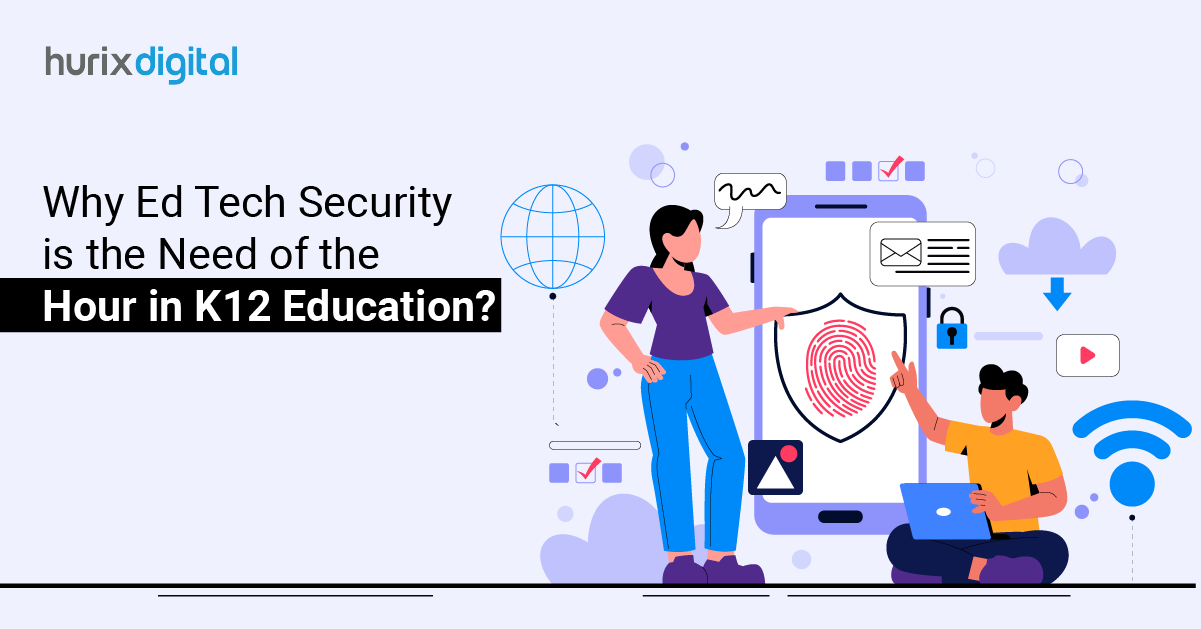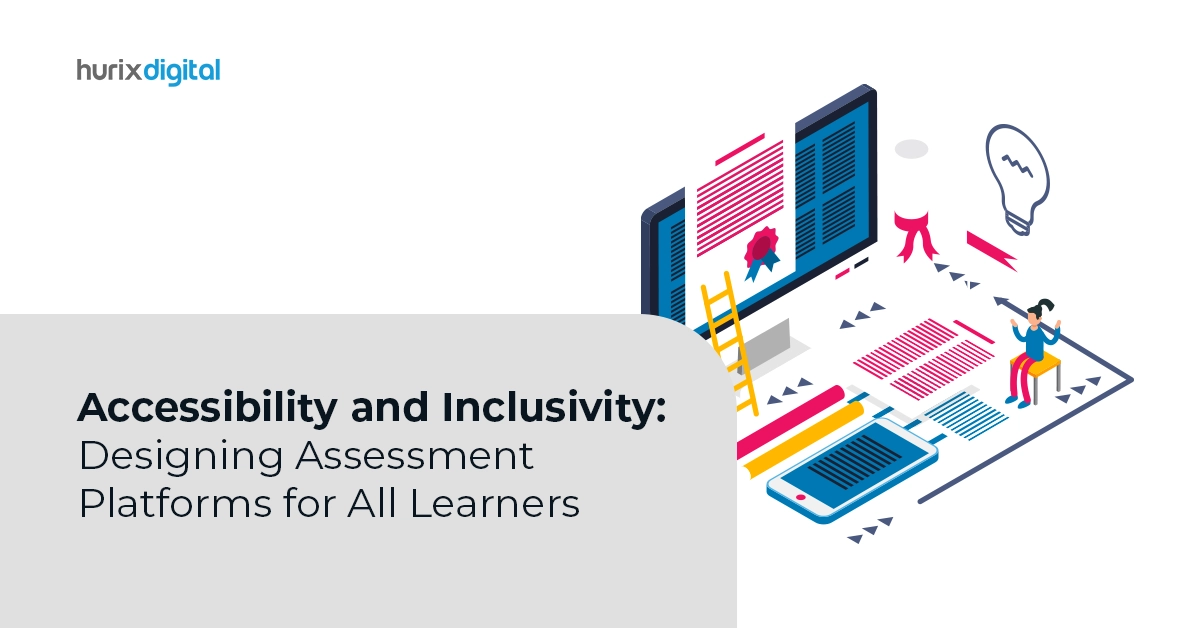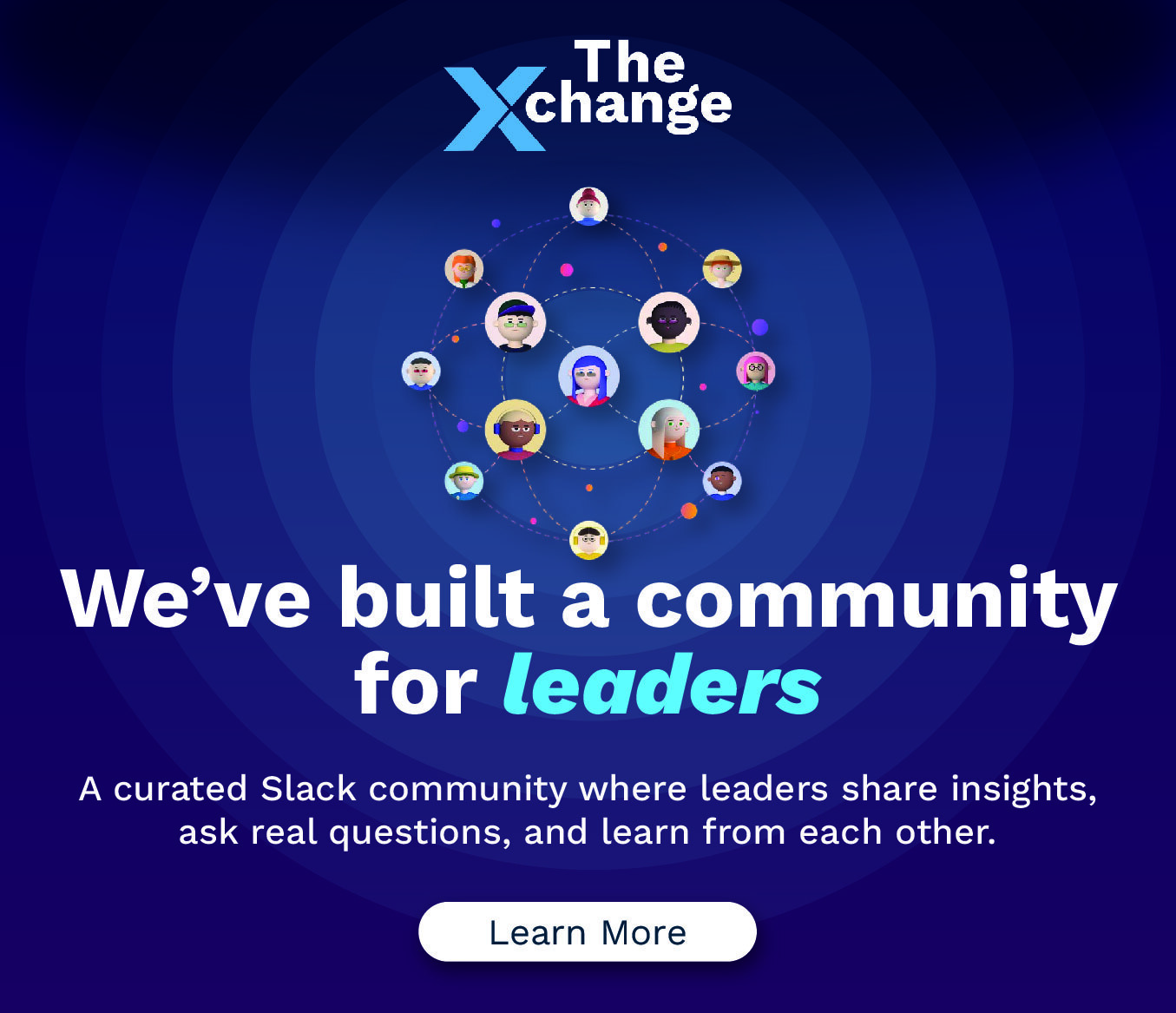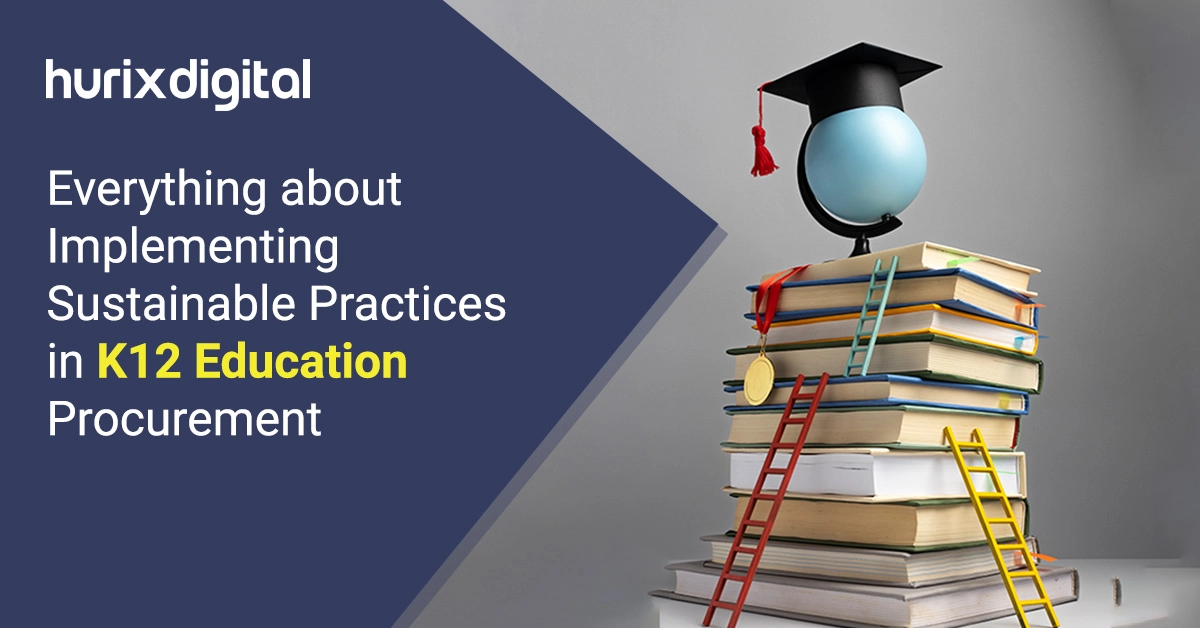
Everything about Implementing Sustainable Practices in K12 Education Procurement
Summarize with:
Every industry is following regulations, making policies, and implementing best practices to promote environmental sustainability. Even the education industry is following suit and considering integral changes to deal with the escalating environmental challenges.
The higher education arena and K12 schools are embracing sustainable practices within their curricula and procurement practices. These institutions are promoting a sense of environmental responsibility in students and contributing to a more sustainable future.
Schools and universities are focusing on school resource management and ensuring procurement obtains value for money. All K12 institutes must shift their culture towards sustainable procurement practices. Today, 51% of global industries are following Sustainable Procurement Practices.
It is high time that this sector encourages sustainable procurement and finds ways to implement ethical sourcing in K12 education.
This guide revolves around the essence of sustainable K12 education procurement and some of the best procurement strategies for K12!
Table of Contents:
- Understanding the Barriers to Sustainable Procurement
- Fundamental Pillars of Sustainable K12 Education Procurement
- Practical Steps for Implementing Sustainable Procurement Strategies for K12
- Step 1: Indulge in Strategic Planning
- Step 2: Consider the Entire Lifecycle
- Step 3: Engage with Eco-Friendly Suppliers
- Step 4: Promote Health and Wellness
- Step 5: Promote Energy and Water Efficiency
- Step 6: Encourage the Use of Sustainable Materials
- Step 7: Optimize Transportation and Logistics
- Step 8: Encourage Training, Education, and Community Engagement
- Best Practices to Implement Sustainable Procurement
- Conclusion
Understanding the Barriers to Sustainable Procurement
Easier said than done, K12 education procurement that drives sustainability faces some challenges, which need to be considered, before implementing key strategies. These barriers are:
- Resistance to Change: Several blockers induce resistance to change due to a lack of awareness. Another reason is that the current system is comfortable with existing policies and thinks that ethical sourcing in K12 education is not a practical solution.
- Misconceptions: There is a misconception that applying school procurement best practices means higher costs. School leaders need to understand the relevance of procurement sustainability and train and educate teams about the same.
- Identifying Environment Champions: One key challenge is to identify individuals who naturally support sustainable initiatives. These could be teachers, parents, or even students who are passionate about environmental issues.
- Convincing Stakeholders: Another challenge could be showing the bigger and better picture of sustainable K12 education procurement to leaders who have high influence but low support. There is a need to develop plans and strategies to engage and educate these leaders.
Also Read: Effective 8 Interactive Learning Strategies in Education to Improve Academic Performance
Fundamental Pillars of Sustainable K12 Education Procurement
Sustainable procurement is built upon three fundamental pillars:
1. Environmental Sustainability
Sustainability in procurement aims to reduce the detrimental impact of goods and services on the environment. Studies show that if businesses worldwide shift towards sustainable practices, they can save $26 trillion by 2030.
Environmental sustainability revolves around the following:
- Implementing CSR policies
- Reducing greenhouse gas emissions
- Improving energy efficiency
- Waste reduction
- Responsible use of natural resources
2. Social Sustainability
Social sustainability emphasizes ethical and responsible K12 education procurement practices. Some significant ways that K12 institutions can contribute to social sustainability are supporting fair trade products, engaging with local suppliers, and ensuring education supply chain management and compliance. Social sustainability includes:
- Fair labor conditions
- Promoting diversity and inclusion
- Supporting local communities
- Safeguarding human rights
3. Economic Sustainability
Economic sustainability in procurement involves creating long-term and economically viable practices. K12 schools must plan, monitor supplier performance, and invest in long-term procurement solutions. Economic sustainability revolves around:
- Cost-effectiveness
- Resource efficiency
- Sustainable economic development
Practical Steps for Implementing Sustainable Procurement Strategies for K12
Incorporating sustainability into K12 education procurement and education supply chain management involves the following steps:
Step 1: Indulge in Strategic Planning
Leaders must make sure that sustainability is encouraged as a key part of your school’s strategic plan. This includes K12 education procurement and curriculum policies. Here are some tips:
- Establish clear sustainability targets for your school.
- Review and update existing policies to include sustainability principles.
- Ensure that sustainability is considered in all aspects of school management.
Step 2: Consider the Entire Lifecycle
View ethical sourcing in K12 education as a process from need identification to disposal. Ensure sustainability at each stage by following these tips:
- Tip 1#: Follow the hierarchy of refuse, reduce, reuse, repurpose, and recycle.
- Tip 2#: Conduct a resource amnesty to identify unnecessary purchases.
- Tip 3#: Centralize resources like stationery to promote efficient use.
Step 3: Engage with Eco-Friendly Suppliers
K12 institutions must create a list of eco-friendly suppliers based on criteria. These criteria revolve around efficient and sustainable packaging, locality, fair trade practices, and product recyclability.
Engage with suppliers to encourage sustainable practices. This could involve reducing the delivery frequency, switching to electronic invoices, or learning from their sustainability initiatives.
Step 4: Promote Health and Wellness
Ensure procurement processes consider the impact on indoor air quality and chemical exposure. It is also important to evaluate products and ensure that they contribute to a healthy school environment.
Step 5: Promote Energy and Water Efficiency
Energy-efficient K12 education procurement helps reduce greenhouse gas emissions. Here are some tips:
- Tip 1#: Schools can replace old HVAC systems with more energy-efficient models.
- Tip 2#: They can install LED lighting systems in buildings.
- Tip 3#: Further, they can invest in solar panels or partner with renewable energy providers.
- Tip 4#: Water-efficient products and services help conserve campus water resources. Schools can install low-flow fixtures, implement water recycling systems, and use drought-resistant plants and efficient irrigation systems.
Step 6: Encourage the Use of Sustainable Materials
Schools must opt for products made from sustainable materials and encourage using responsible resources. Here are some tips:
- Tip 1#: Incorporate recycled plastics in products like outdoor furniture and signage.
- Tip 2#: Select bio-based materials for various applications.
Step 7: Optimize Transportation and Logistics
Did you know that the transport sector is responsible for nearly 15% of total greenhouse gas emissions? It is the fourth largest source of global emissions.
Hence, optimizing transportation and logistics can reduce the carbon footprint of procurement activities. Schools can:
- Tip 1#: Use electric or hybrid vehicles for campus transportation.
- Tip 2#: Reduce the number of orders to minimize emissions.
- Tip 3#: Plan efficient school transportation routes to lower fuel consumption.
Step 8: Encourage Training, Education, and Community Engagement
Sustainable K12 education procurement can save money in the long term, support community welfare, and reduce climate change. Schools must involve teachers and students in sustainability initiatives to enhance their learning and encourage a greener future.
Here, education and training on sustainability hold key relevance. Curate content that focuses on organizational frameworks and sustainable policies and employs effective training sessions for all stakeholders. According to research, effective, sustainable procurement practices can enhance brand value by 15% to 30%.
Such measures can improve the school’s image, attract parents and teaching talent, and meet regulatory expectations.
Best Practices to Implement Sustainable Procurement
Here are some integral school procurement best practices that K12 institutions must implement:
1. Assess Your Needs and Impacts
Before making any purchases, assess your current situation to identify needs and impacts. Analyze consumption patterns, waste generation, energy use, carbon footprint, and social and ethical issues related to K12 education procurement activities. Leaders must conduct sustainability audits to prioritize actions and measure progress.
2. Adopt a Policy
Leaders of educational institutions must implement a clear policy and framework for sustainable procurement. It is significant to outline criteria for sustainable procurement and introduce practical tools and resources like guidelines and training.
3. Engage with Stakeholders
You must engage with stakeholders and align sustainability procurement efforts with their needs. You can use surveys or social media platforms to involve stakeholders.
4. Choose Suppliers and Products Carefully
Pick the best suppliers and products based on environmental, social, and economic performance. Schools can also use testimonials, labels, ratings, or certifications to assess suppliers and products.
5. Implement Environmentally Preferred Purchasing
Environmentally Preferred Purchasing (EPP) is an approach that encourages educational institutions to select products and services that barely affect human health and the environment. By embracing EPP, schools can contribute to environmental conservation by helping K12 institutions in the:
- Tip 1#: Reducing harmful environmental impacts
- Tip 2#: Prioritizing eco-friendly products
- Tip 3#: Promoting healthier environments for students and staff
- Tip 4#: Minimizing exposure to hazardous substances
- Tip 5#: Teaching students about sustainability through practical examples
6. Make the Most of Advancing Technology
By 2026, 70% of technology procurement leaders will have environmental-sustainability-aligned objectives. Using AI for sustainability can contribute $5.2 trillion to the global economy by 2030.
Technology can support K12 education procurement processes and measure the environmental impact of purchased goods and services. Schools can:
- Tip 1#: Develop software and tools to identify environmentally friendly alternatives in educational settings.
- Tip 2#: Use data analytics to assess environmental impact and suitability for schools.
- Tip 3#: Regularly review practices to incorporate new technologies and innovations in sustainability.
Check out EXCLUSIVE: Hurix Digital Develops 100 Interactive Learning Programs for a Leading US-Based Education Institution in Just a Year
Conclusion
In 2024, sustainable procurement has become a trend that can lead to 5% to 10% reduced costs and 15% to 30% enhanced brand value for organizations. Schools’ sustainable procurement practices reflect a commitment to reduce environmental impacts and promote eco-friendly practices.
Implementing school procurement best practices reduces the environmental impact and helps institutions comply with environmental regulations. Schools have the power to encourage sustainability using critical procurement practices.
Partner with Hurix Digital for key strategies, especially related to training and education, that focus on sustainable K12 education procurement. With expert support, schools can support environmental goals and ensure the well-being of their students.
Contact us today!
Summarize with:

Senior Vice President – Business Development
at Hurix Digital, with over 25 years of experience in EdTech and workforce learning. He excels in business development, customer relationship management, and scaling digital learning solutions, driving global growth through innovative content, simulations, and AI‑driven training offerings
 A Space for Thoughtful
A Space for Thoughtful 
